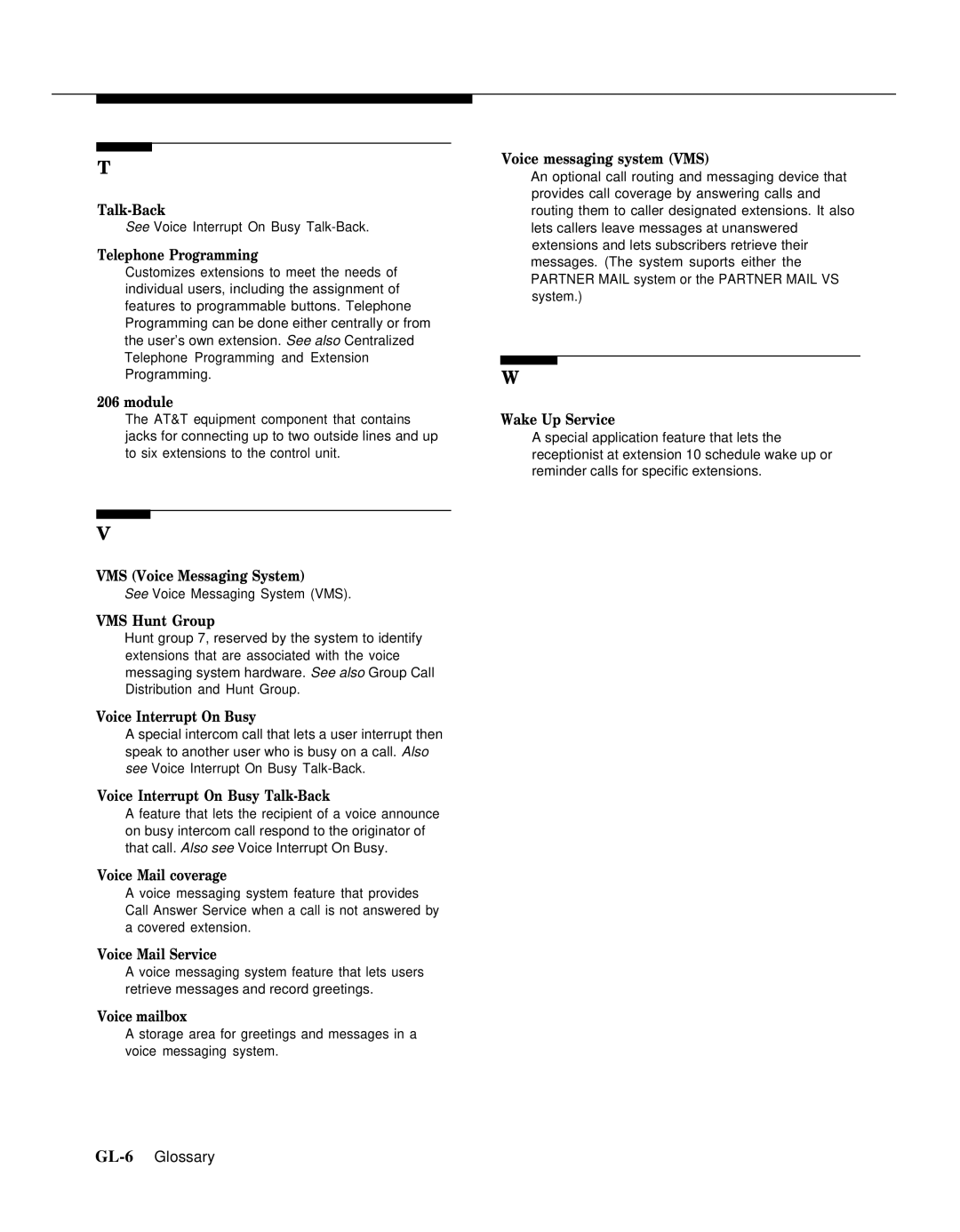
T
Talk-Back
See Voice Interrupt On Busy
Telephone Programming
Customizes extensions to meet the needs of individual users, including the assignment of features to programmable buttons. Telephone Programming can be done either centrally or from the user’s own extension. See also Centralized Telephone Programming and Extension Programming.
206 module
The AT&T equipment component that contains jacks for connecting up to two outside lines and up to six extensions to the control unit.
V
VMS (Voice Messaging System)
See Voice Messaging System (VMS).
VMS Hunt Group
Hunt group 7, reserved by the system to identify extensions that are associated with the voice messaging system hardware. See also Group Call Distribution and Hunt Group.
Voice Interrupt On Busy
A special intercom call that lets a user interrupt then speak to another user who is busy on a call. Also see Voice Interrupt On Busy
Voice Interrupt On Busy Talk-Back
A feature that lets the recipient of a voice announce on busy intercom call respond to the originator of that call. Also see Voice Interrupt On Busy.
Voice Mail coverage
A voice messaging system feature that provides Call Answer Service when a call is not answered by a covered extension.
Voice Mail Service
A voice messaging system feature that lets users retrieve messages and record greetings.
Voice mailbox
A storage area for greetings and messages in a voice messaging system.
Voice messaging system (VMS)
An optional call routing and messaging device that provides call coverage by answering calls and routing them to caller designated extensions. It also lets callers leave messages at unanswered extensions and lets subscribers retrieve their messages. (The system suports either the PARTNER MAIL system or the PARTNER MAIL VS system.)
W
Wake Up Service
A special application feature that lets the receptionist at extension 10 schedule wake up or reminder calls for specific extensions.
